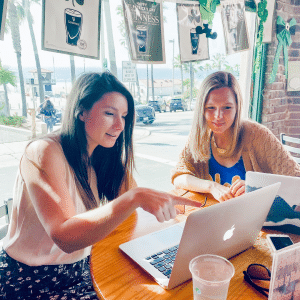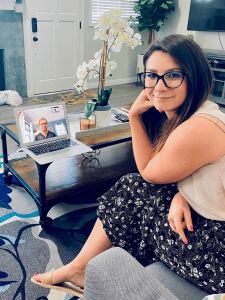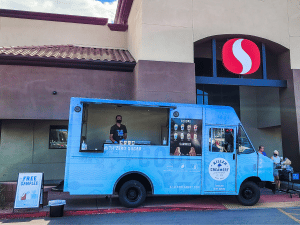Did you know there are four learning styles: Visual, Auditory, Reading/Writing, and Kinesthetic? Have you ever taken the time to explore your learning style? It may differ greatly from your best friend, sibling, co-worker, or spouse.
When training new brand ambassadors for your experiential marketing activations, it’s extremely beneficial your brand training deck is aligned with most of the learning styles to ensure everyone on your team is retaining the information they need to be successful.

1. Visual Learning:
For those of us who find ourselves to be visual learners, it means we think and learn in pictures. I write “us” because, fun fact, my personal learning style is visual! People like us need visual aids like pictures, facial expressions, and texts with illustrations for the key message to be best received and understood.
Health and Fitness Activations provides visuals in every training deck by including photos of what the demo table should look like, how to properly upload and categorize receipts, and how to correctly input inventory on their event reports. We use arrows and circles, in addition to providing text, to ensure each key message is clearly conveyed to the brand ambassadors.

Unlike visual learners, some people prefer to learn by hearing what they want or need to learn. This works well when the person can participate in a discussion, like an HFA training call, reading text out loud, or talking the details out with a co-worker/manager or friend.
Every training call led by a Health and Fitness Activations manager is over Zoom video. The manager will walk through the brand training deck and explain the key points of each slide with every demo rep on the call. This allows us to spend more time going into additional detail in areas that are more likely to create confusion on the day of the activation.
3. Reading and Writing Learning:
We encourage everyone to take an abundance of notes during the training calls and review the information that will be covered before the discussion. Yes, we provide the brand training deck well in advance of the training call. This is specifically for our team members who learn best by reading! People who learn by reading/writing learn and retain more of the concepts on their own by taking notes on the information they read.
By providing the training deck in advance and encouraging the brand ambassador to review the information before the call, we’re allowing the team member to come to the training call feeling prepared to ask all their important questions, which will naturally provide an additional benefit to everyone else on the call.

Kinesthetic learners want to jump right in and start doing the job at hand. Sometimes it feels like they don’t have the patience to sit in a typical training call because they learn best by doing, making mistakes, learning from their mistakes, and then improving.
Kinesthetic learning is difficult to do in a training deck, but when possible, adding a hands-on element to your training is helpful for these learners. As an example, having the brand ambassador actually role play an engagement with a consumer allows them to get practice articulating the key messages. Assigning the brand ambassador to an event and having them fill out an event report while you review it on the call is another way to engage with kinesthetic learners on a training call.
Now that you’ve learned the importance of including most of the learning styles in your brand training deck, it is also imperative to understand that a great brand training deck is never complete. As your team members follow through with the execution of the demo or experiential marketing event, it’ll be crucial for you to update the training deck with the common areas that have shown to be confusing during the activation.
We’re curious. What learning style works best for you?




